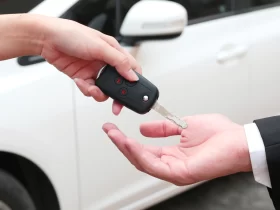It is certainly not pleasant or predictable for a car to fail, but it can happen to any driver, regardless of seniority. Therefore, people with a driving license should know how to behave when towing a car in order to comply with applicable road traffic regulations and easily transport the vehicle to the house or to a mechanical workshop. So, what are the basic rules for towing a car? Focus here to know the basic rules for towing a car
SAFE CAR TOWING – CAR TOWING RULES AND REGULATIONS
Do many inexperienced young drivers wonder if it is possible to tow a car? Yes, according to the Road Traffic Act (chapter 9), the vehicle can be towed, but specific conditions must be met – what? Only one car is allowed to be towed, and a person holding a driving license must sit behind the wheel – also not intoxicated. The permitted speed of the towed vehicle is 30 km / h in built-up areas and 60 km / h outside built-up areas (also valid on expressways). How to safely tow a car?
- When towing a car, a warning triangle must be placed on the left side of the towed vehicle.
- A tow bar or a special towing eye can be used to tow the car.
- Before moving off, check the connection of the towed vehicle with the towing vehicle.
- The towing rope must be taut at all times and its strength must be appropriate to the towed car. It should be properly marked (white and red stripes) or a yellow or red flag should be placed on the rope to improve visibility.
- The rope cannot be attached to the suspension elements (rocker arms, buffers), it may damage the rocker arm or tear the bumper.
- Drivers must be in constant contact, so you need to arrange the method of communication, e.g. using a telephone with a hands-free kit).
- The hazard warning lights cannot be turned on in either the towing or the towed car.
- Both vehicles can only move in the right-hand lane (applies to multi-lane roads).
- There must be a sufficient distance between the towed cars – 3 m with a rigid connection or 4-6 m with a loose connection.
- Both the driver of the towed vehicle and the towing vehicle should signal their intention to turn.
- If there is poor visibility on the route, the towed vehicle must have the side lights on.
- When it comes to towing prohibition, you cannot tow a vehicle with a trailer or semi-trailer, with inoperative brakes or steering system (this is allowed only when the method of towing the car excludes the need to use them). It is also forbidden to tow more than one vehicle at a time, with the exception of a articulated vehicle.
CAN I TOW ON THE HIGHWAY?
No, the Highway Code expressly prohibits towing a vehicle on the motorway on your own, as it is dangerous for all road users. This can only be done by a specially designed vehicle (tow truck).
As you know, the maximum speed on the highway is 140 km / h, towing a car at a speed several times lower (outside the built-up area it can be no more than 60 km / h) is very risky and strictly prohibited.
In this situation, you should call the roadside assistance, and while waiting for a tow truck, put on a reflective vest and preferably stand behind the highway barriers (both the driver and other passengers). The driver must also display a warning triangle approximately 100 m from the vehicle and turn on the hazard warning lights so that other drivers can spot the damaged vehicle in good time.
TOWING A CAR AND ASSISTANCE INSURANCE
When towing a car, be extremely careful and follow the above rules. This is a difficult and dangerous task that novice drivers should not undertake on their own. A more sensible option will be to take advantage of the roadside assistance offer. Thanks to the assistance insurance, the costs of towing a car after an accident or breakdown will be covered (within the applicable limit) by the insurer.
Most often, insurance companies provide assistance up to a given distance from the home of the vehicle owner, e.g. 250 km. It is worth adding that there are also policies with no mileage limit available on the market. Information on the distance is included in the General Terms and Conditions of Insurance (GTC), so you need to read the contract carefully before signing, to avoid unpleasant surprises.
It is worth adding that both the towed, and towing vehicles must also have compulsory third party liability insurance. Depending on the type of service, assistance can provide quick assistance in many other difficult situations during the trip (e.g. medical care, transport of passengers and drivers, rental of a replacement vehicle, assistance with changing a wheel, repair of a damaged car at the site of a breakdown or accident).
To sum up, knowing the rules of the road and following the universal rules of towing a car, you can avoid the costs of paying a fine.










